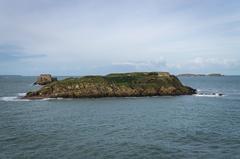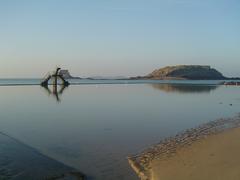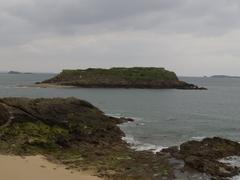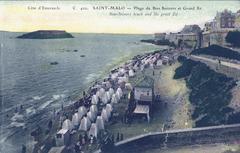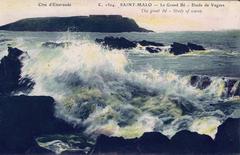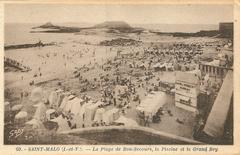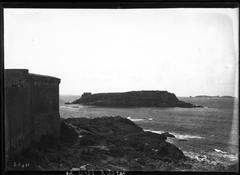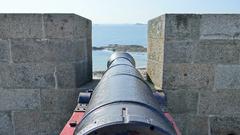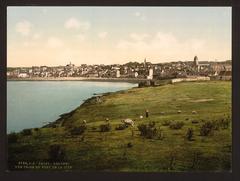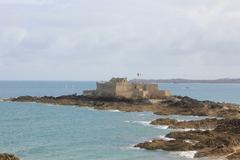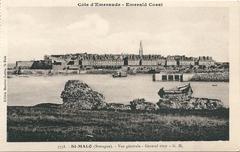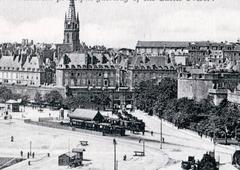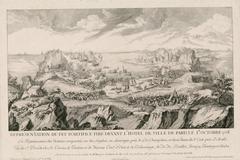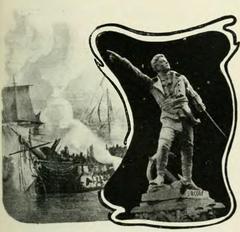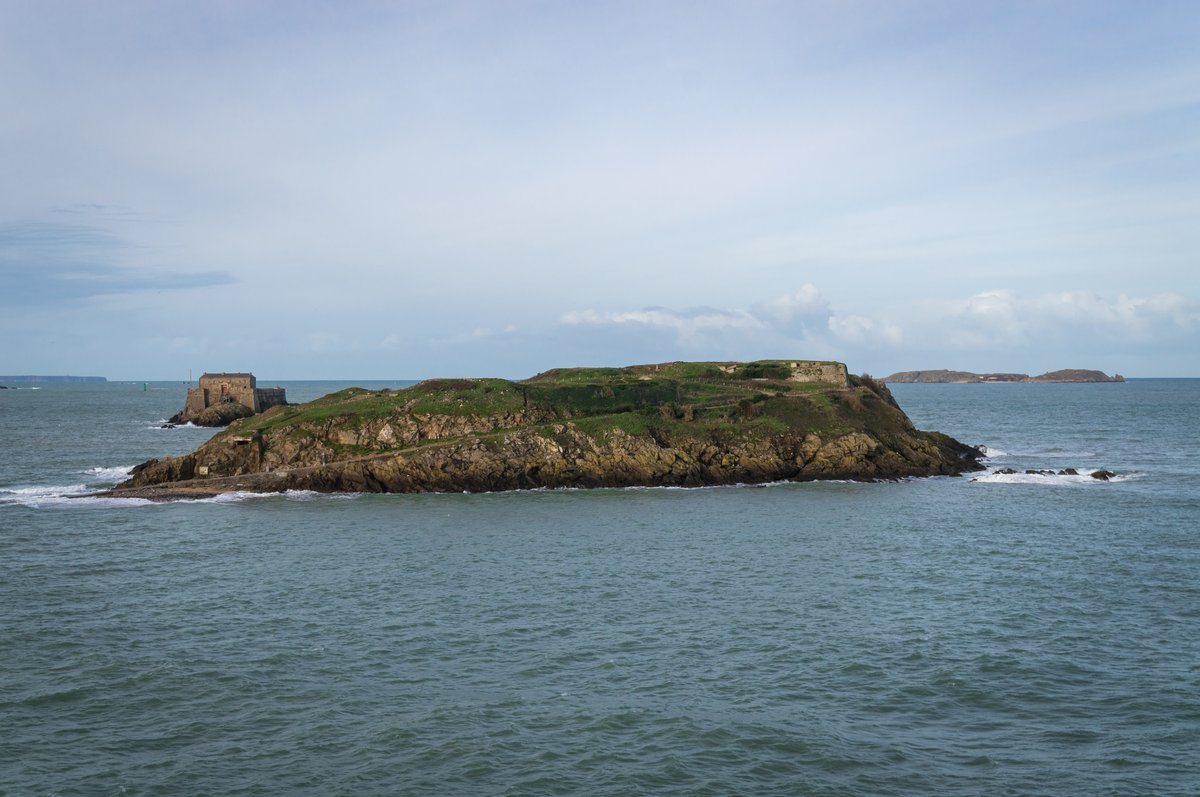
Visiting Grand Bé: A Complete Guide to Saint-Malo’s Historic Island
Date: 23/07/2024
Introduction
Grand Bé, located near the walled city of Saint-Malo in Brittany, France, is a tidal island of immense historical, cultural, and environmental significance. This picturesque island, accessible only during low tide, offers a unique blend of natural beauty and rich history, making it a must-visit destination for travelers. Known as the final resting place of renowned French writer François-René de Chateaubriand, Grand Bé has witnessed various historical epochs, from its strategic importance during the medieval period to its role during the age of corsairs, the French Revolution, Napoleonic Wars, and World War II. Today, the island serves as a preserved historical site, attracting visitors with its scenic landscapes, historical landmarks, and vibrant cultural events. This comprehensive guide provides insights into the island’s history, visiting hours, ticket information, travel tips, and more, ensuring an enriching experience for all who explore Grand Bé. For more detailed information and updates, visit the official Saint-Malo tourism website or download their mobile app.
Table of Contents
- Introduction
- History of Grand Bé, Saint-Malo, France
- Visiting Grand Bé
- Cultural Significance and Special Events
- Nearby Attractions
- Photographic Spots and Travel Tips
- FAQ
- Conclusion
History of Grand Bé, Saint-Malo, France
Early History and Formation
Grand Bé is a tidal island located near the walled city of Saint-Malo in Brittany, France. The formation of Grand Bé dates back to the geological processes that shaped the Brittany coastline. Over millennia, the island emerged as a result of sediment deposition and erosion, creating a unique landscape that is accessible only during low tide.
Medieval Period
During the medieval period, Saint-Malo rose to prominence as a fortified city and a hub for privateers. The strategic location of Grand Bé made it an important lookout point for detecting incoming ships. Historical records from the 12th century indicate that the island was used for defensive purposes, although no permanent structures were built at that time.
17th and 18th Centuries - The Age of Corsairs
The 17th and 18th centuries marked the golden age of Saint-Malo’s corsairs, privateers authorized by the French crown to attack enemy ships. Grand Bé played a crucial role during this period as a vantage point for corsairs to monitor maritime traffic. The island’s elevated position provided an unobstructed view of the English Channel, allowing corsairs to plan their raids effectively (Saint-Malo Corsairs).
The French Revolution and Napoleonic Wars
The French Revolution and subsequent Napoleonic Wars brought significant changes to the region. During this tumultuous period, Grand Bé was fortified to protect Saint-Malo from British naval attacks. The island was equipped with cannons and other defensive structures, remnants of which can still be seen today (Napoleonic Fortifications).
Chateaubriand and the Romantic Era
One of the most notable historical figures associated with Grand Bé is François-René de Chateaubriand, a prominent French writer and politician. Born in Saint-Malo in 1768, Chateaubriand is often regarded as the father of French Romanticism. His deep connection to his birthplace led him to choose Grand Bé as his final resting place. In 1848, Chateaubriand was buried on the island, in a tomb facing the sea, as per his wishes. His grave has since become a pilgrimage site for literary enthusiasts and tourists alike (Chateaubriand’s Tomb).
19th and 20th Centuries - Tourism and Preservation
The 19th and 20th centuries saw a shift in the island’s role from a strategic military site to a tourist attraction. The rise of tourism in Saint-Malo brought attention to Grand Bé’s historical and natural significance. Efforts were made to preserve the island’s heritage, including the maintenance of Chateaubriand’s tomb and the remnants of its fortifications (Saint-Malo Tourism).
World War II and Post-War Period
During World War II, Saint-Malo and its surrounding areas, including Grand Bé, were occupied by German forces. The island was fortified by the Germans as part of the Atlantic Wall defenses. The fortifications included bunkers and gun emplacements, some of which remain visible today (WWII Fortifications). The liberation of Saint-Malo in 1944 marked the end of the island’s military significance, paving the way for its post-war transformation into a heritage site.
Modern Era - Conservation and Accessibility
In recent decades, Grand Bé has been the focus of conservation efforts aimed at preserving its historical and natural heritage. The island is now managed by local authorities who ensure that its historical sites are maintained and accessible to the public. Visitors can explore the island during low tide, walking across the causeway that connects it to the mainland. Information panels and guided tours provide insights into the island’s rich history, making it a must-visit destination for history enthusiasts and tourists alike (Grand Bé Conservation).
Visiting Grand Bé
Visiting Hours and Accessibility
Grand Bé is accessible only during low tide. Visitors should check the tide schedules before planning their visit to ensure safe access to the island. The causeway that connects the island to the mainland is submerged during high tide, making it impossible to reach the island. Visitors are advised to wear appropriate footwear for walking on potentially slippery surfaces.
Ticket Information and Guided Tours
There is no entrance fee to visit Grand Bé, but guided tours are available for those interested in a more in-depth exploration of the island’s history. These tours often include visits to Chateaubriand’s tomb and other significant landmarks. Tickets for guided tours can be purchased online or at the Saint-Malo tourism office.
Cultural Significance and Special Events
Grand Bé holds a special place in the cultural landscape of Saint-Malo. It is not only a historical site but also a symbol of the city’s enduring connection to the sea. The annual Chateaubriand Festival, held in Saint-Malo, celebrates the life and works of the famous writer, drawing visitors to his tomb on Grand Bé and highlighting the island’s cultural significance (Chateaubriand Festival).
Nearby Attractions
While visiting Grand Bé, tourists can also explore other historical sites in Saint-Malo, such as Fort National and the walled city itself. These sites offer a deeper understanding of the region’s rich history and maritime heritage.
Photographic Spots and Travel Tips
Grand Bé offers numerous photographic opportunities, especially during sunrise and sunset. The panoramic views of Saint-Malo and the English Channel are a photographer’s dream. Visitors should bring a camera and be prepared to capture the island’s stunning landscapes.
FAQ
When is the best time to visit Grand Bé? The best time to visit Grand Bé is during low tide when the causeway is accessible. Check tide schedules before planning your visit.
Is Grand Bé accessible to people with disabilities? The terrain can be challenging, and the causeway may not be suitable for all visitors. It is advisable to contact local authorities for specific accessibility information.
Are there guided tours available? Yes, guided tours are available and can be booked through the Saint-Malo tourism office or online.
What should I bring when visiting Grand Bé? Wear appropriate footwear for walking on potentially slippery surfaces and bring a camera to capture the beautiful landscapes.
Conclusion
The history of Grand Bé is a testament to its strategic importance, cultural heritage, and natural beauty. From its early use as a lookout point to its role in the age of corsairs and its transformation into a tourist destination, the island has played a significant role in the history of Saint-Malo. Today, it stands as a preserved historical site, offering visitors a glimpse into the past and a chance to connect with the rich maritime heritage of Brittany. For the latest updates, visiting hours, and ticket information, check the official Saint-Malo tourism website or follow their social media channels.
References
- Brittany Tourism
- Saint-Malo Corsairs
- Napoleonic Fortifications
- Chateaubriand’s Tomb
- Saint-Malo Tourism
- WWII Fortifications
- Grand Bé Conservation
- Chateaubriand Festival
- France.fr
- Saint-Malo Agglomeration
- Conservatoire du Littoral
- IFREMER
- Brittany Ferries
- Saint-Malo Guide
- Tide Forecast
- Chateaubriand Society
- Petit Bé Fort
